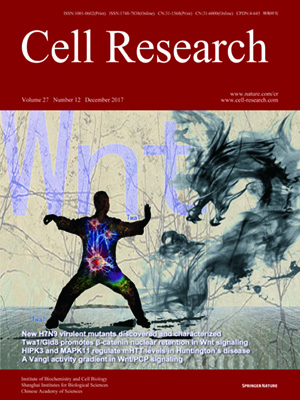
Volume 27, No 12, Dec 2017
ISSN: 1001-0602
EISSN: 1748-7838 2018
impact factor 17.848*
(Clarivate Analytics, 2019)
Volume 27 Issue 12, December 2017: 1521-1524 | Open Access
LETTERS TO THE EDITOR
Structural basis for BIR1-mediated negative regulation of plant immunity
Cuiyan Ma1,*, Yanan Liu2,*, Bing Bai3,*, Zhifu Han3, Jiao Tang4, Heqiao Zhang3, Hoda Yaghmaiean2, Yuelin Zhang2 and Jijie Chai3
1School of Life Sciences, Peking University, Beijing 100871, China
2Department of Botany, University of British Columbia, Vancouver, BC V6T 1Z4, Canada
3Ministry of Education Key Laboratory of Protein Science, Center for Structural Biology, School of Life Sciences, Tsinghua-Peking Joint Center for Life Sciences, Tsinghua University, Beijing 100084, China
4Institute of Apicultural Research, Chinese Academy of Agricultural Sciences, Beijing 100093, China
Correspondence: Jijie Chai, Tel: +86-10-62797718 E-mail: chaijj@tsinghua.edu.cn; Yuelin Zhang,(yuelin.zhang@ubc.ca)
Plant receptor kinases (RKs) can function as pattern recognition receptors (PRRs) for perception of pathogen-associated molecular patterns (PAMPs) to induce immune responses1,2. One of such PRRs is the leucine-rich repeat RK (LRR-RK) FLAGELLIN-SENSING 2 (FLS2) that recognizes bacteria-derived flagellin (flg22 epitope)3,4. The smaller LRR-RK BRI1-associated kinase 1 (BAK1) acts as a co-receptor with FLS25,6.
10.1038/cr.2017.123
FULL TEXT | PDF
Browse 1613


